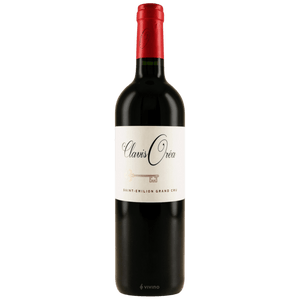C is for Cabernet
by Rory Craig
on
It may not be the coolest grape, but it's probably the most well known. Cabernet Sauvignon is famous the world over for it's heavily structured, tannic wines that are given to long periods of age in oak. Cabernet produces some of the longest lived red wines in the world. Deep black and blue fruits, cedar, spice and cigar underpin the variety, and it is an ideal partner of steak, grilled meats and bold flavours - high tannic content is hugely favourable to match high protein content. Cabernet's spiritual home is Bordeaux, but it'll grow anywhere - we've got 6 from across the world.

Cabernet Sauvignon was recently overtaken as the world's most prolific grape by Kyoho, a Chinese variety - given some of the plantings in China, this is hardly surprising. It has cast a long shadow over the wine world for a long time. Despite this long period of dominance, it's popularity has never waned, indeed it's only grown. Spiritually, it's home is in France, specifically the left Bank of Bordeaux, though it is now outgunned by the Right Bank darling Merlot. It will be found elsewhere in France but curiously it's rarely bottled varietally - it's mostly blends. It can be found in Italy in the Super Tuscan wines of Bolgheri, while in Spain it has died off over the years in favour of indigenous varieties. In the New World it is very popular, Napa Valley in the States and Margaret River in Western Australia produce their own neo-classical styles with great aplomb. South Africa are now producing great examples. It makes up a lot of Chile's production, but this is essentially bulk production.

"...spiritually, its home is in France, specifically the Left Bank of Bordeaux..."
Cabernet Sauvignon is synonymous with tannins. What are tannins? They are a phenolic compound found in red wine that produces an astringent, drying sensation in the wine. The experience of tannins in red wine are similar to that when you drink very strong black tea - the dryness is felt most keenly on the gums and teeth. Firm tannins mean firm wines and age-worthy wines (partly because the tannins act as a preservative) and oak ageing augments it all. As the wine ages, these chains of tannin molecules join together, making the wine smoother on the palate over time. Astringent, tannic wines can be smoothened slightly before maturity by decanting, double decanting, aerating, pouring into a big glass and allowing to stand, or, as we often joke: hyper-decanting (putting it in a blender - do not actually try this!!).

Cabernet Sauvignon errs very heavily on the black fruit spectrum, with primary notes and flavours blackcurrant, cassis, black cherry being most prominent. There is often a strong perception of cedar, particularly is there's oak, and there can often be leather, tobacco, coffee, and spice. The Bordeaux based, classical persuasion are very much this way inclined, but it's actually quite rare that the variety is not blended with any of a number of co-stars, indeed, I'm not aware of ANY growth wines that are 100% Cabernet. In the new world, they are prolific in number, as the extra sunshine just seems to take the very astringent edge off.
Any questions, just holler.
Rory
|
|
C is for Cabernet Sauvignon
€116,00
C is for Cabernet Sauvignon
It may not be the coolest grape, but it's probably the most well known. Cab. Sauv. is famous the world over for heavily structured, tannic wines, generally aged in oak. Cabernet Sauvignon is most famous for being the main grape of...
€116,00
Craven Cabernet Sauvignon
€30,00
Craven Cabernet Sauvignon
Serious and heavy Cabernet Sauvignon from Craven, one of the superstars of South African wine.
€30,00
Camp Cabernet Sauvignon 2019
€32,00
Camp Cabernet Sauvignon 2019
Medium bodied & subtle, not a normal US Cabernet, but then Kenny is not a normal wine maker.
Read more about Folk Machine and Kenny on our blog HERE
€32,00
Hobo Cabernet Sauvignon
€34,00
Hobo Cabernet Sauvignon
A stunningly fine red that's a little bit rustic, and sustainably made - unfiltered. Deep, plush and lush.Read more about Folk Machine and Kenny on our blog HERE
€34,00
Clavis Orea Haut Medoc 2019
€45,00
Clavis Orea Haut Medoc 2019
Serious pedigree on show here, made by the former head wine maker at Haut Brion, classic Medoc. Get initiated at BORDEAUX WINE SCHOOL on our blog HERE
€45,00
Matthiasson Cabernet Sauvignon 2019
€105,00
€76,00
Matthiasson Cabernet Sauvignon 2019
Broad and expansive, but tight and compact. That doesnt make any sense, but who needs sense when you have Matthiasson Cabernet.
Read about the AMERICAN TERROIRISTS on our blog HERE
€105,00
€76,00






